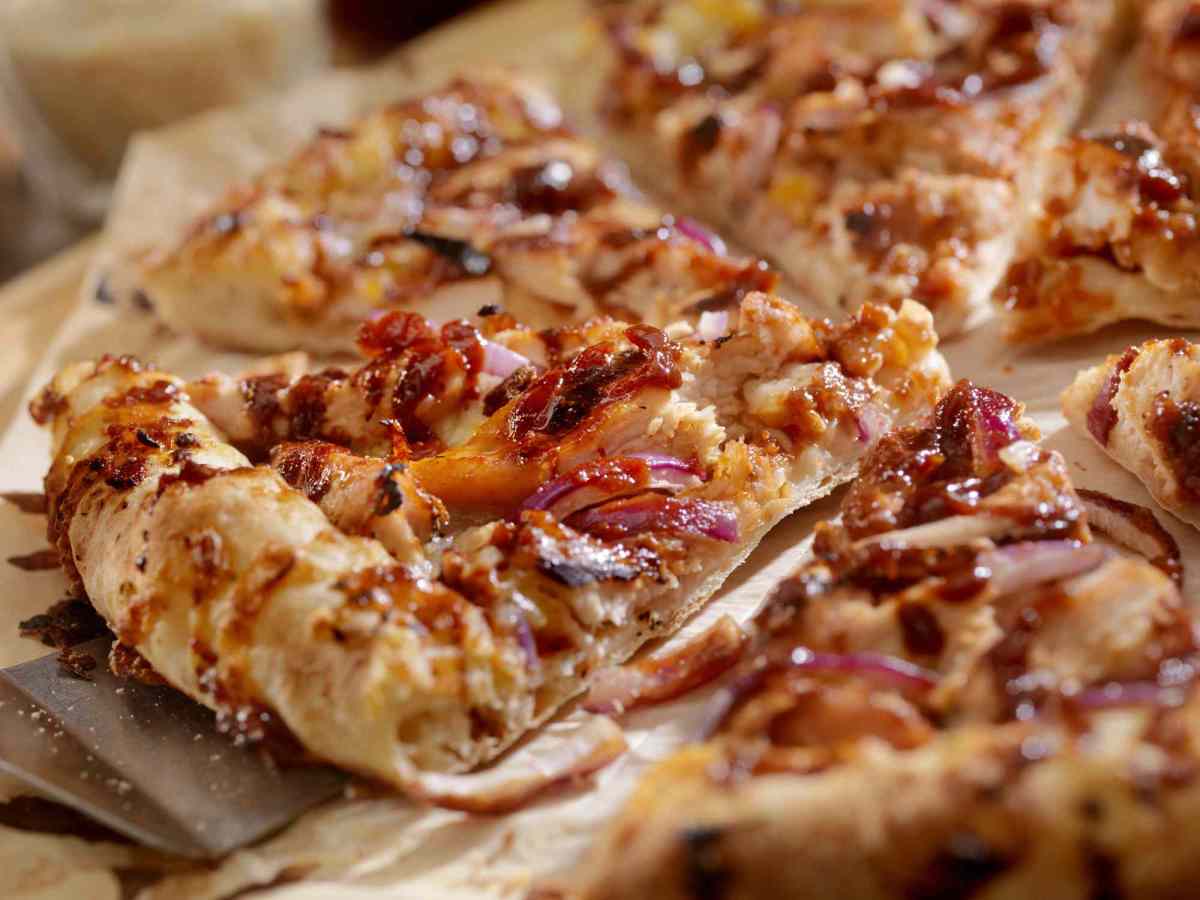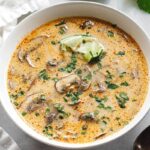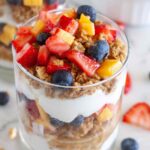Reimagine pizza night with this exploration of dairy-free delights! Forget the limitations of traditional toppings; we’re diving deep into a world of vibrant, flavorful alternatives that will transform your pizza experience. From crafting the perfect dairy-free crust – whether cauliflower, gluten-free, or almond flour – to mastering the art of melting dairy-free cheeses, this guide provides a comprehensive journey into creating unforgettable, plant-based pizzas. Prepare to discover creative topping combinations that burst with fresh, seasonal ingredients and learn the secrets to achieving a visually stunning, restaurant-quality pizza at home.
We’ll unravel the mysteries of achieving the perfect texture and taste in each component, from the crispiness of the crust to the creamy melt of the cheese substitute. Imagine a pizza where every bite is a symphony of flavors and textures, a masterpiece crafted with care and imagination. This guide isn’t just about recipes; it’s about elevating your pizza night into a culinary adventure.
Dairy-Free Pizza Crust Options
Choosing the right dairy-free pizza crust is crucial for a delicious and satisfying meal. The options available offer a diverse range of textures and flavors, catering to various dietary needs and preferences. This section will explore several popular choices, comparing their characteristics and providing a detailed recipe for one popular option.
Dairy-Free Crust Comparison
The following table compares three popular dairy-free pizza crust options: cauliflower, gluten-free (using a blend), and almond flour. Each option presents unique characteristics impacting the final pizza experience.
| Crust Type | Ingredients | Preparation Time (approx.) | Texture | Taste |
|---|---|---|---|---|
| Cauliflower | Riced cauliflower, eggs, cheese alternative (e.g., nutritional yeast), herbs, spices | 30-45 minutes | Slightly dense, moist, can be crumbly if over-processed | Mild, subtly sweet, takes on the flavor of toppings well |
| Gluten-Free Blend | Gluten-free flour blend (e.g., rice flour, tapioca starch, potato starch), xanthan gum, water, oil, salt | 20-30 minutes | Crisp, slightly chewy, holds toppings well | Neutral, allows toppings to shine |
| Almond Flour | Almond flour, eggs, cheese alternative (e.g., nutritional yeast), oil, salt | 25-35 minutes | Slightly crumbly, delicate, can be prone to burning | Nutty, slightly sweet, pairs well with savory toppings |
Vegan Gluten-Free Pizza Crust Recipe
This recipe provides a delicious and adaptable vegan gluten-free pizza crust. Ingredient sourcing is crucial for a successful outcome. Look for high-quality gluten-free flour blends specifically designed for pizza crusts. Xanthan gum is essential for binding and creating a cohesive texture.
Ingredients:
- 1 ½ cups gluten-free pizza flour blend (ensure it contains xanthan gum)
- ½ teaspoon salt
- 1 tablespoon olive oil
- ¾ cup warm water
- 1 tablespoon nutritional yeast (for cheesy flavor)
Instructions:
- In a large bowl, whisk together the gluten-free flour blend, salt, and nutritional yeast.
- Add the olive oil to the dry ingredients and mix until combined.
- Gradually add the warm water, mixing with a fork or your hands until a dough forms. The dough will be slightly sticky.
- Knead the dough gently on a lightly floured surface for 2-3 minutes until it comes together.
- Form the dough into a ball and flatten it slightly. Wrap in plastic wrap and let it rest for at least 15 minutes.
- Preheat oven to 450°F (232°C).
- Roll out the dough on a lightly floured surface to your desired thickness and shape.
- Transfer the dough to a pizza pan or baking sheet.
- Prick the dough with a fork to prevent air bubbles.
- Bake for 12-15 minutes, or until the crust is lightly golden brown and cooked through.
Dairy-Free Crust Visual Descriptions
Imagine three distinct pizza crusts:
Cauliflower Crust: A pale, creamy-off-white crust, slightly textured with small flecks of cauliflower visible. The surface is relatively smooth but not perfectly flat, with a slightly porous appearance suggesting a moist, dense interior.
Gluten-Free Crust: A light golden-brown crust, with a subtly textured surface that is not overly smooth. The edges might show slight browning, indicating a crisp exterior. The overall appearance suggests a thin but sturdy crust, able to hold a substantial amount of toppings.
Almond Flour Crust: A pale beige crust, with a noticeably finer texture than the other two. It appears slightly more delicate, with a slightly crumbly look, especially around the edges. The surface is relatively even but might have a few tiny cracks indicating a drier, less dense interior.
Delicious Dairy-Free Cheese Alternatives

Embarking on a dairy-free pizza journey doesn’t mean sacrificing creamy, melty goodness. A world of delicious and versatile alternatives awaits, each offering unique flavor profiles and textures to elevate your pizza experience. These options cater to various dietary needs and preferences, allowing for creative pizza construction.
Choosing the right dairy-free cheese is crucial for achieving that perfect pizza experience. The melting properties, flavor intensity, and overall texture significantly impact the final product. Consider the pizza style – thin crust, deep dish, or stuffed – when selecting your cheese alternative, as some melt better than others under different cooking conditions.
Dairy-Free Cheese Alternatives: Nutritional Profiles and Flavor Characteristics
Several excellent dairy-free cheese alternatives provide a rich and satisfying pizza topping experience. The following list details five popular choices, highlighting their nutritional benefits and unique flavor profiles.
- Nutritional Yeast: This deactivated yeast boasts a cheesy, nutty flavor with a slightly savory note. It’s a complete protein source, rich in B vitamins, and provides a good source of fiber. Its granular texture works well sprinkled over pizza, adding a subtle cheesy flavor without the melt. It’s ideal for pizzas where a strong, melted cheese isn’t the focal point.
- Violife Vegan Cheese Shreds: Violife offers a variety of shreds that mimic the texture and melt of traditional mozzarella. While nutritional content varies by product, they are generally low in saturated fat and cholesterol, and are often fortified with calcium and vitamin B12. Their mild, slightly sweet flavor profile makes them suitable for various pizza styles, especially those where a classic mozzarella-like experience is desired.
- Daiya Shreds: Daiya shreds are another popular choice known for their melting capabilities and ability to create a stretchy, stringy texture. Made primarily from tapioca starch, they are low in fat and calories but are not a significant source of protein or vitamins. Their flavor is mild and adaptable to different pizza toppings.
- Miyoko’s Kitchen Cultured Vegan Cheese: This cheese is crafted through a unique culturing process, resulting in a complex flavor profile with notes of tanginess and sharpness. It’s often described as having a more sophisticated taste than many other vegan cheeses. While richer in fat than some options, it offers a luxurious melt and creamy texture, particularly well-suited for gourmet pizzas with bold toppings.
- Follow Your Heart Vegan Gourmet Cheese Shreds: These shreds offer a good balance of flavor and melt. Their texture is generally smooth and creamy when melted, though not as stringy as some other options. Nutritionally, they are a moderate source of protein and fat, with a relatively mild flavor that complements a wide range of pizza toppings.
Cashew-Based Vegan Mozzarella Recipe
Creating your own cashew-based mozzarella allows for precise control over ingredients and texture. This recipe provides a creamy, melty alternative that’s perfect for pizza.
Ingredients:
- 1 cup raw cashews, soaked in hot water for at least 30 minutes
- 1/2 cup water
- 2 tablespoons nutritional yeast
- 2 tablespoons lemon juice
- 1 tablespoon olive oil
- 1 teaspoon salt
- 1/2 teaspoon garlic powder
- 1/4 teaspoon onion powder
Instructions:
- Drain and rinse the soaked cashews.
- Combine all ingredients in a high-speed blender and blend until completely smooth and creamy. Add more water, one tablespoon at a time, if needed to reach desired consistency.
- Taste and adjust seasonings as needed.
- Transfer the mixture to an airtight container and refrigerate for at least 30 minutes to allow the flavors to meld and the mixture to firm slightly. This step improves the texture and melt.
- Use as a topping for your pizza. For optimal melting, spread the cashew cheese evenly over the pizza sauce before adding other toppings.
Tips for Optimal Texture:
Soaking the cashews thoroughly is crucial for achieving a smooth, creamy texture. A high-speed blender is recommended for a perfectly smooth consistency. If the mixture is too thick, add a tablespoon of water at a time until it reaches the desired consistency. Refrigerating the mixture before using it helps to firm it up, resulting in a better melt on the pizza.
From the satisfying crunch of a perfectly baked dairy-free crust to the explosion of flavors in each carefully chosen topping, creating a dairy-free pizza is an act of culinary creativity. This guide has equipped you with the knowledge and inspiration to craft pizzas that are not only delicious and visually appealing but also cater to dietary needs and preferences. So, gather your ingredients, embrace the possibilities, and prepare to redefine your pizza night with a celebration of flavor and innovation. The vibrant colors, the diverse textures, and the harmonious blend of tastes will leave you and your guests utterly captivated. Enjoy the journey!
Key Questions Answered
Can I use store-bought dairy-free cheese for this recipe?
Absolutely! Many store-bought dairy-free cheeses work well on pizza. Experiment to find your favorite brand and type.
How long does the dairy-free pizza crust last?
Store leftover crust in an airtight container in the refrigerator for up to 3 days.
Can I freeze the dairy-free pizza?
Yes, you can freeze both the prepared crust and the assembled, unbaked pizza. Wrap well to prevent freezer burn.
What are some good substitutes for cashew cheese if I have an allergy?
Alternatives include sunflower seed cheese, potato-based cheese, or commercially available vegan cheeses.


